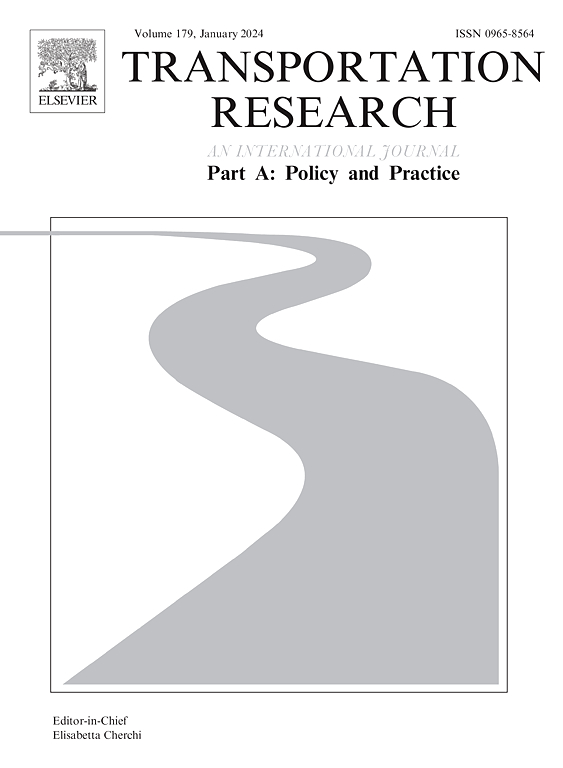Telemedicine adoption before, during, and after COVID-19: The role of socioeconomic and built environment variables
IF 6.3
1区 工程技术
Q1 ECONOMICS
Transportation Research Part A-Policy and Practice
Pub Date : 2025-02-01
DOI:10.1016/j.tra.2024.104351
引用次数: 0
Abstract
The COVID-19 pandemic has led to a significant shift in healthcare delivery, with telemedicine emerging as an important additional service provision channel. This study introduces a novel methodological framework, combining a multiperiod multivariate binary probit (MBP) system and a cross-sectional MBP system, to investigate telemedicine adoption trends, as well as the facilitators and deterrents of adoption. The analysis utilizes data from a three-wave COVID Future Survey (April 2020-November 2021), supplemented by population density and healthcare-related establishment data. The results reveal a generational digital divide, with older adults exhibiting lower adoption rates due to technological barriers and preferences for traditional healthcare interactions. The study also highlights the role of the presence of children, income, transportation access, employment status, and residential location characteristics in telemedicine adoption. Notably, individuals without vehicle access or living in areas with lower geographic accessibility to healthcare providers are more likely to adopt telemedicine, suggesting its potential to reduce healthcare access disparities. The analysis of telemedicine facilitators and deterrents underscores the importance of accessibility, lifestyle preferences, privacy and security issues, technological confidence, and mobility constraints. The study provides valuable insights into policy implications across the public health, telecommunication, transportation, and urban planning sectors.
求助全文
约1分钟内获得全文
求助全文
来源期刊
CiteScore
13.20
自引率
7.80%
发文量
257
审稿时长
9.8 months
期刊介绍:
Transportation Research: Part A contains papers of general interest in all passenger and freight transportation modes: policy analysis, formulation and evaluation; planning; interaction with the political, socioeconomic and physical environment; design, management and evaluation of transportation systems. Topics are approached from any discipline or perspective: economics, engineering, sociology, psychology, etc. Case studies, survey and expository papers are included, as are articles which contribute to unification of the field, or to an understanding of the comparative aspects of different systems. Papers which assess the scope for technological innovation within a social or political framework are also published. The journal is international, and places equal emphasis on the problems of industrialized and non-industrialized regions.
Part A''s aims and scope are complementary to Transportation Research Part B: Methodological, Part C: Emerging Technologies and Part D: Transport and Environment. Part E: Logistics and Transportation Review. Part F: Traffic Psychology and Behaviour. The complete set forms the most cohesive and comprehensive reference of current research in transportation science.

 求助内容:
求助内容: 应助结果提醒方式:
应助结果提醒方式:


